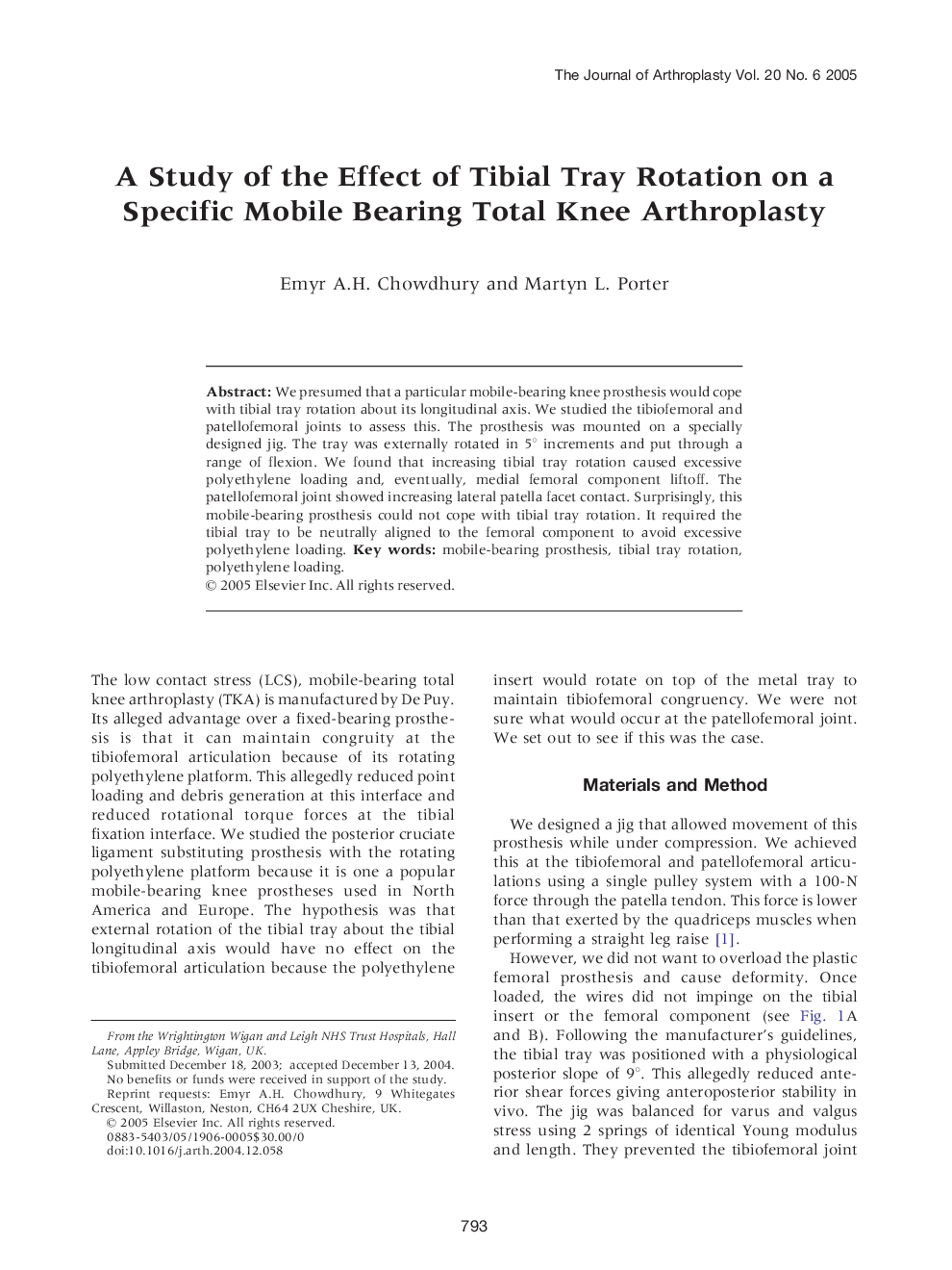| Article ID | Journal | Published Year | Pages | File Type |
|---|---|---|---|---|
| 10081705 | The Journal of Arthroplasty | 2005 | 5 Pages |
Abstract
We presumed that a particular mobile-bearing knee prosthesis would cope with tibial tray rotation about its longitudinal axis. We studied the tibiofemoral and patellofemoral joints to assess this. The prosthesis was mounted on a specially designed jig. The tray was externally rotated in 5° increments and put through a range of flexion. We found that increasing tibial tray rotation caused excessive polyethylene loading and, eventually, medial femoral component liftoff. The patellofemoral joint showed increasing lateral patella facet contact. Surprisingly, this mobile-bearing prosthesis could not cope with tibial tray rotation. It required the tibial tray to be neutrally aligned to the femoral component to avoid excessive polyethylene loading.
Related Topics
Health Sciences
Medicine and Dentistry
Orthopedics, Sports Medicine and Rehabilitation
Authors
Emyr A.H. Chowdhury, Martyn L. Porter,
